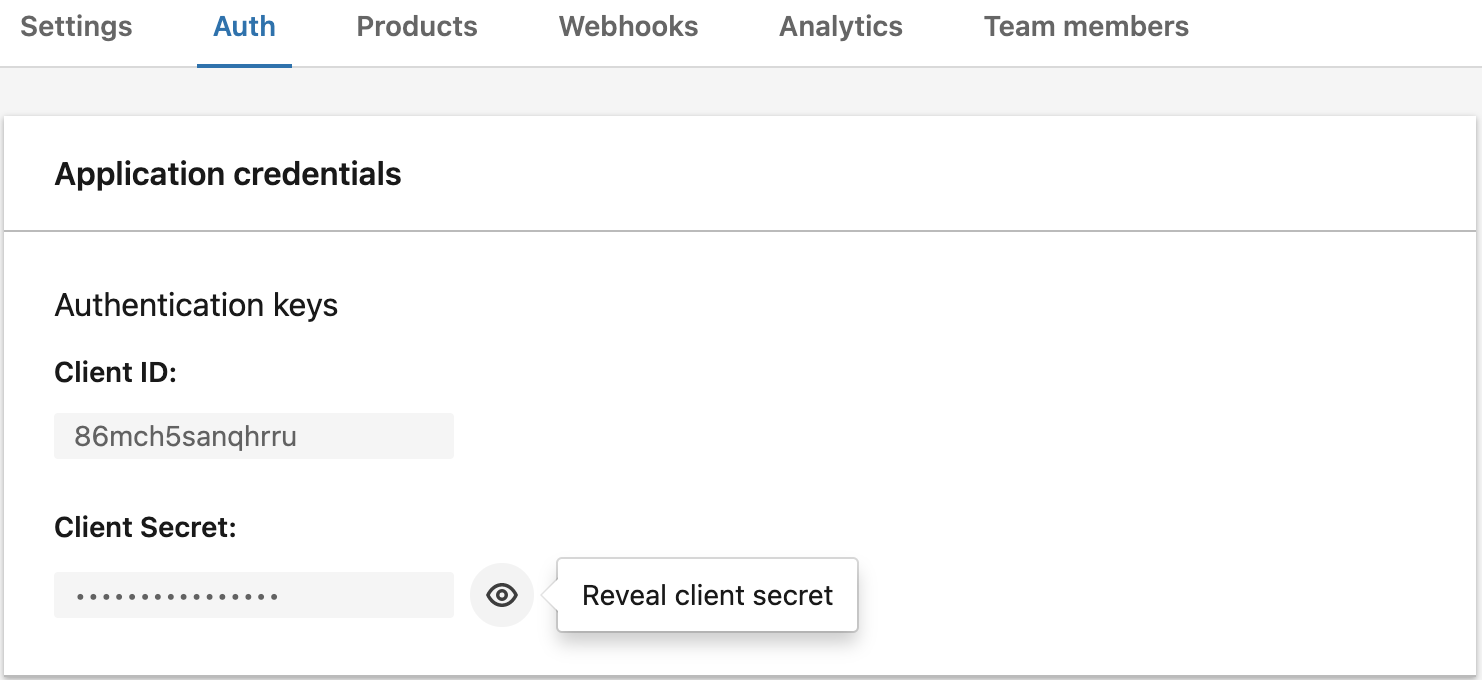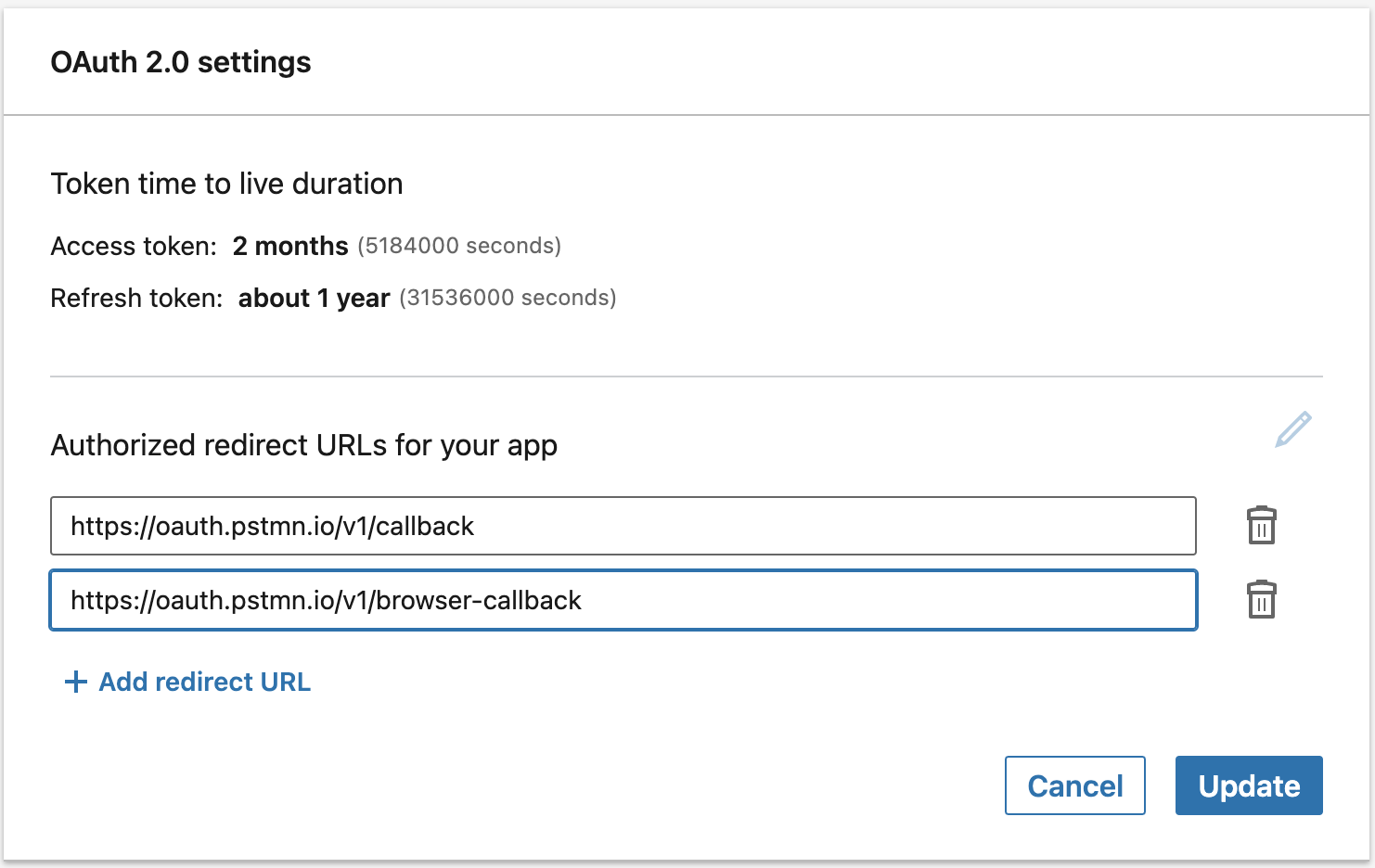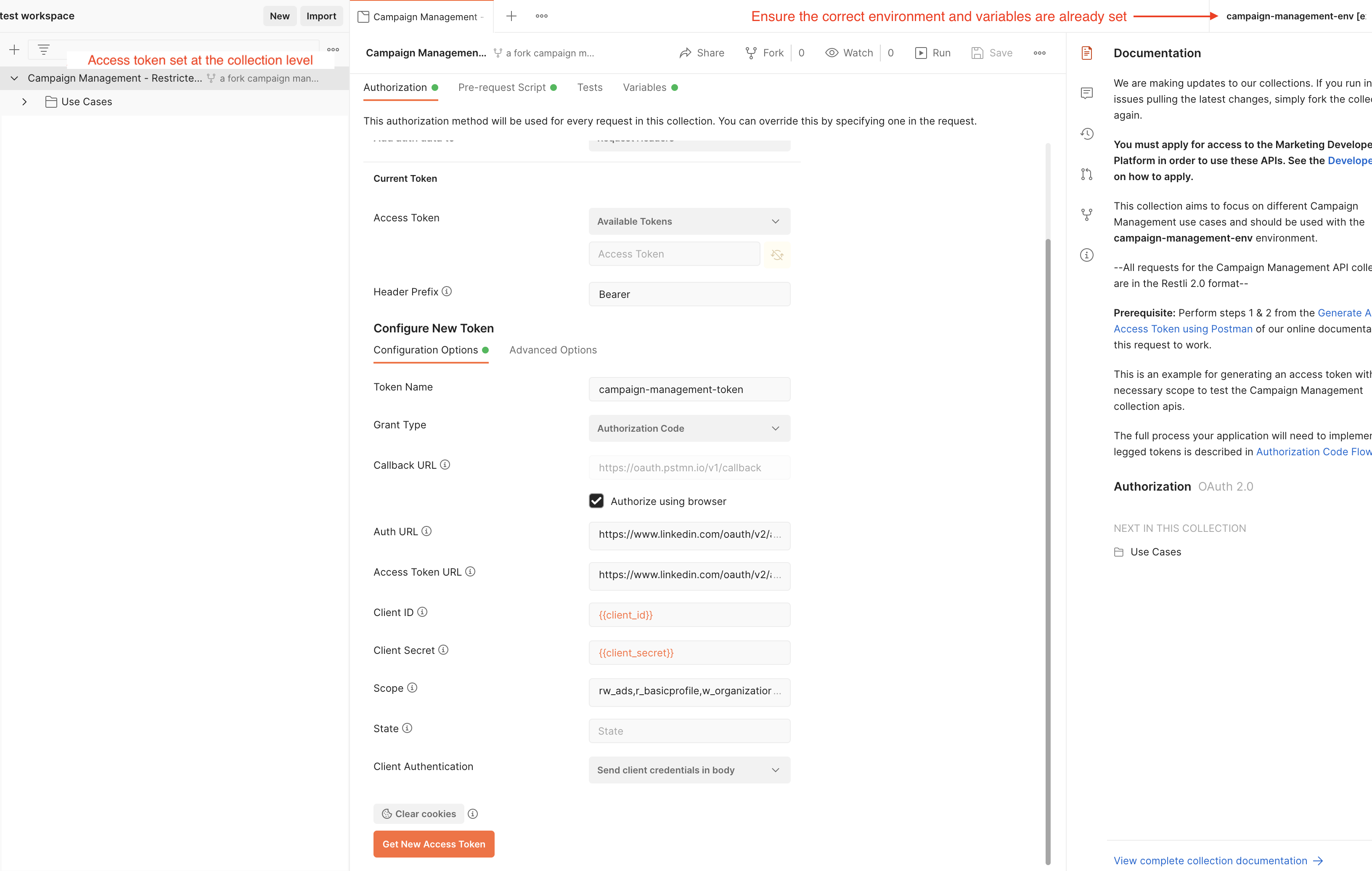Note
Access to this page requires authorization. You can try signing in or changing directories.
Access to this page requires authorization. You can try changing directories.
Summary
The full process your application will need to implement for 3-legged tokens is described in Authorization Code Flow and 2-legged tokens is described in Client Credentials Flow. The steps outlined below describe the process for using LinkedIn's Public Postman workspaces to generate OAuth tokens for testing. For any specific examples, we will use the Marketing Solutions workspace, but all steps should easily apply to all workspaces. These steps assume you have already created a free Postman account.
Step 1 - Application
Go to the LinkedIn Developer Portal, select the app you'll be using, click the "Auth" tab, and locate your Client ID and Client Secret. Please note these values for use later during this process.

Step 2 - Auth Settings
From the same "Auth" tab, scroll to the bottom of the page. Under "OAuth 2.0 Settings", add the Postman callback URLs https://oauth.pstmn.io/v1/callback and https://oauth.pstmn.io/v1/browser-callback to your Redirect URL list.
Caution
Postman uses the term "Callback URL"
LinkedIn uses the term "Redirect URL"

Step 3 - Fork Collections and Environments
Navigate to LinkedIn's public Postman workspaces:
Choose a workspace and fork the collections and relevant environments of interest. Each collection will have an environment it should be used with. For example, if you were to navigate to the LinkedIn Marketing Solutions workspace, the Campaign Management collection should be used with the campaign-management-env environment.
Fork a Postman Collection
Fork a collection:
Fork an environment:
Step 4 - Fill in Environment Variables
Fill in the Client ID and Client Secret environment variables before moving onto the next step. Don't forget to save your changes!

Step 5 - Headers
Each collection in each workspace will have its OAuth 2.0 Authorization settings pre-populated with the correct URLs, environment variables, and scopes to be able to successfully run the requests within the corresponding Use Cases folder. Click on a collection title to open it's Authorization tab. Ensure that the correct environment is selected and click "Get new access token":
- Grant Type: Authorization Code (3-legged token) or Client Credentials (2-legged token)
- Callback (Redirect) URL:
https://oauth.pstmn.io/v1/browser-callback- Note the Callback URL should be
https://oauth.pstmn.io/v1/callbackwith the "Authorize using browser" box checked if you are using the Postman Desktop app
- Note the Callback URL should be
- Auth URL:
https://www.linkedin.com/oauth/v2/authorization - Access Token URL:
https://www.linkedin.com/oauth/v2/accessToken - Client ID: {using the client_id from the environment variables}
- Client Secret: {using the client_secret from the environment variables}
- Scope: Differs per collection but an example is {
rw_ads,r_basicprofile,w_organization_social,w_member_social,rw_organization_admin} - Client Authentication:
Send client credentials in bodywhen the Grant Type is Authorization Code.Send as Basic Auth headerwhen the Grant Type is Client Credentials.

Step 6 - Identity Authentication
If the Grant Type in Step 5 was Authorization Code then Postman will take you to the LinkedIn authorization page, where you may be prompted to log into LinkedIn. Click "Allow" to authorize the request. The prompt on the authorization page is dictated by the requested scopes in the previous step.

Step 7 - Use Token
Postman will then display your access token to be used for testing. Choose the 'Use Token' button to set this as the currently used token. The token will automatically be propagated to all requests within the corresponding collection. The video below shows an example of requesting a 3-legged token via the Authorization Code Grant Type.
Step 8 - Testing
Finally, send a request within the Use Cases folder. Ensure the correct environment is selected and that if any environment or collection level variables are being used in the request, ensure they are set. For example, in the screenshot below, the request uses the sponsoredaccount_id variable from the campaign-management-env environment.
Learn more about Postman variables in Postman's online documentation

Note that some requests dynamically set variables via a script that runs post request execution. You will know if a script is set to run for a request if there is a green dot next to the Tests tab.

To see an example sample response, view the saved example.

